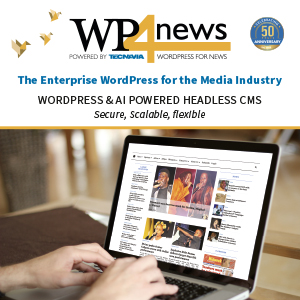Electronic distribution—is it the future?
Feb 1, 2013
By Ken Blum
Black Ink
Santa brought me a Kindle Fire HD for Christmas, and the more I use this remarkable device, the more I’m convinced I’m right.
Once I’ve taken a few hours to figure it out, it can do everything but scratch my back—I can surf the Web, scan and answer e-mail, read e-books, magazines and newspapers; listen to music, upload pictures and video, and on and on and on. All this with color that is incredibly clear—stunning, actually. All for less than $200 and a Wi-Fi connection.
So what do I think I am right about?
This, I believe, is the future of community newspapers.
I know it’s not the most popular opinion, and it comes from a person who has been involved with community papers since the last days of letterpress. (Okay, I’ll fess up and admit to being 66, but if we met in person you would swear I’m not a day older than 67.) Nearly all my buddies who are Pub Aux columnists will strongly disagree—Kevin Slimp (especially), Jerry Bellune, Ed Henninger, Peter Wagner. Add most of the National Newspaper Association’s membership to that the list as well.
Please, please note that I’m saying it’s the future of community newspapers, and not at all the end of community newspapers. We’ll still be around, just delivered differently, with more immediate content and many more features that can be offered in print.
When will the majority of your papers be delivered electronically rather than in print?
My prediction has been by Jan. 1, 2020.
My gut feeling tells me sooner—maybe much sooner.
What’s the current evidence backing this contention?
• Most paid community newspapers are already encouraging a significant segment of their subscribers to convert from print to an e-edition that’s usually in a PDF or PDF-like format. These are the out-of-area subscribers, typically around 20 percent of a newspaper’s subscriber base. The newspaper has no cost for printing, little cost for delivery and no more headaches about the U.S. Postal Service getting the paper to a subscriber a week or two late. The e-edition subscriber typically pays a lower subscription rate (i.e. the same rate local subscribers pay) and receives the product immediately.
So, again, we’re already pushing digital subscriptions.
• The cost of mobile devices, i-Pads, Kindles, Nooks, Androids etc—are going down, down and down.
• The move has already taken place for our bigger brethren. Metro papers in cities such as Detroit and New Orleans are printing only three days a week. For the rest of the week, readers are guided to the website or mobile aps.
• Most of us acknowledge that computers and mobile devices are the way the younger generation prefers (make that “demands”) to access information and entertainment. This younger generation of tech lovers gets older by the day—in actual years and in terms of olders becoming more tech-savvy. And don’t assume that the senior set is totally ignorant about electronic gizmos and gadgets. Not so.
I know you’re asking the elephant-in-the-room question.
Ninety percent of our revenue, you say, comes from the print product. How in heaven’s name do we support a news staff, ad sales staff, production staff, building and operating costs with the flimsy revenue e-advertising yields?
That, my friends, is a legitimate and huge question. Newspapers’ future as the electronic alternative demanded by consumers depends on the answer.
And I don’t pretend to have the definitive answer. If I did, I would give Facebook and Google a run for their money.
Here is a possible scenario.
• Keep in mind that it will be your choice. Despite the demand for sophisticated e-editions, you will be able to stay in print if you like. The local content in the paper will still be in demand.
• Again, everything depends on the advertising model, and I think it could shake out like this:
A. The creative departments at community newspapers will become electronic sophisticates. They will produce ads on e-edition pages that will not only be in color and type but that will have features such as video (3-D in the future), links to more specific information (i.e. click on a car in an auto dealer ad and all the info on that car pops up in another screen)—and on and on.
The newspaper also will make these ads available to other e-publications, again all charged at a hefty and profitable rate.
B. These ads for e-editions will be well-received by advertisers because they will be placed on e-pages that draw readers with local news, still a community paper’s bread and butter.
C. E-edition newspapers can still opt for a paid or free model, just like there are paid and free print newspapers today.
D. The e-papers will no longer be daily, semiweekly or weekly. They’ll all be “hourlies”—constantly updated, constantly attracting readers, constantly yielding results for advertisers.
The advertising model—the advertising model—I can’t say it enough. And I’m not at all sure it will be worked out in the near future.
In the meantime, we should keep up with the technology and trends. Because the era of the e-community newspaper is on its way. We’ll still be here, but without ink on our fingers. © Ken Blum 2013
Ken Blum is the publisher of Butterfly Publications, an advising/speaking/publishing business dedicated to improving the profitability and quality of community newspapers. He puts out a free e-mail newsletter 40 times a year titled Black Inklings. It features nuts and bolts ideas to improve revenue and profits at hometown papers. To subscribe to the newsletter or contact Ken, e-mail him at blummer@aol.com; or phone to 330-682-3416.







